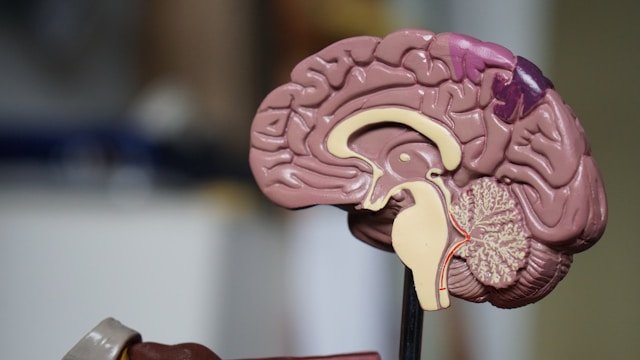Scientists have produced the first detailed characterization of the changes that weight loss (WL) causes in human adipose tissue (AT) by analyzing hundreds of thousands of cells from morbidly obese individuals undergoing weight loss surgery. They found a range of positive effects, including clearing out damaged, aging cells and increased metabolism of harmful fats.
The team, headed by William R Scott, PhD, at the MRC Laboratory of Medical Sciences and at Imperial College London, analyzed gene expression in more than 170,000 cells that made up the fat tissue samples from 70 people. They generated a high-resolution single-nucleus and spatial atlas of human AT in people with extreme obesity undergoing therapeutic weight loss and in healthy lean counterparts. The investigators suggest that their findings could help scientists better understand how weight loss leads to health improvements at a molecular level, which in the future could help to inform the development of therapies for diseases such as type 2 diabetes.
“We’ve known for a long time that weight loss is one of the best ways to treat the complications of obesity, such as diabetes, but we haven’t fully understood why,” Scott said. “This study provides a detailed map of what may actually be driving some of these health benefits at a tissue and cellular level.”
Scott and colleagues reported on the study in Nature, in a paper titled “Selective remodeling of the adipose niche in obesity and weight loss,” in which they stated, “This rich representation of human AT biology and pathophysiology offers a valuable resource for mechanistic and therapeutic exploration.”
“As the number of people living with obesity surpasses one billion, there has never been a greater need to understand the opposing effects of obesity and WL on metabolic health,” the authors wrote. Increased adipose tissue mass, which the team describes as “the defining feature of obesity,” is one of the main risk factors for type 2 diabetes, cardiovascular disease, some cancers, and early death.
ATs can adapt their structure and function to maintain metabolic homeostasis as energy demands change, but in obesity, pathological remodeling changes occur that contribute to inflammation, insulin resistance, metabolic dysfunction, and disease, the team further explained. However, the molecular triggers, cellular phenotypes, and signaling pathways that underlie human AT dysfunction in obesity are not completely understood, and this presents a barrier to developing treatments. “A synergistic and detailed understanding of the biology underpinning these contrasting clinical effects is central to improving treatment options and health outcomes,” the team stated. Defining the cell types, regulatory mechanisms, and signaling pathways responsible for pathological and therapeutic AT remodeling is needed to guide therapy development for the harmful health consequences of obesity.”
To help gain new insights into AT dysfunction in obesity, and how this may be reversed after weight loss, Scott and colleagues compared samples of fat tissue from healthy-weight individuals with samples from people with severe obesity (BMI over 35) undergoing bariatric weight loss surgery. “To better understand obese AT dysfunction and its reversal after WL, we carried out single-nucleus RNA sequencing of approximately 100,000 cells from men and women with extreme obesity (n = 25) before and after WL surgery and from healthy lean controls,” they explained. The weight loss group had fat samples taken during surgery and more than five months after surgery, at which point they had lost an average of 25 kg.
The researchers then integrated their newly derived RNA sequencing data with that from another 50,000 cell nuclei from an additional published human subcutaneous adipose atlas. Further context was added through spatial transcriptomics data derived from another 25,000 cells from equivalent patient cohorts. This collectively, the team stated, “… enabled us to orient and contextualize cell phenotypes within the organizational hierarchy of healthy and dysfunctional AT.”
The investigators’ analyses unexpectedly found that weight loss triggers the breakdown and recycling of lipids. This recycling process could be responsible for burning energy and reversing the harmful build-up of lipids in other organs such as the liver and pancreas, they suggested. “We find that weight loss reduces adipocyte hypertrophy and biomechanical constraint pathways, activating global metabolic flux and bioenergetic substrate cycles that may mediate systemic improvements in metabolic health.” The researchers noted that further study will be needed to establish if lipid recycling is linked to the positive effects of weight loss on health, such as remission of type 2 diabetes. They also found that the weight loss cleared out senescent cells, which are aging and damaged cells that accumulate in all tissues. Senescent cells can cause harm because they no longer function properly and release signals that lead to tissue inflammation and scarring. “We discover selective vulnerability to senescence in metabolic, precursor, and vascular cells and reveal that senescence is potently reversed by weight loss,” they pointed out.
Scott further commented to GEN, “We were surprised by two findings. First, we expected weight loss to break down fats, but we didn’t expect it to remake fats from broken down fats. This recycling process appears to accelerate during weight loss and may pull in harmful fats from other tissues, something other researchers have linked to remission of diabetes. Second, we found that weight loss almost completely eliminated damaged, senescent cells from fat tissue. We were not surprised by this finding, as other studies have shown caloric restriction improves senescence. We were surprised by the sheer extent to which this happens in weight loss.”
In contrast, the researchers found that weight loss did not improve the effects of obesity on certain aspects of the immune system. Rather, they discovered that inflammatory immune cells, which infiltrated the fat of people with obesity, did not fully recover even after weight loss. This type of inflammatory cell memory could be harmful in the long term if people regain weight, the authors suggested. “… we demonstrate that weight loss represses obesity-induced macrophage infiltration but does not completely reverse activation, leaving these cells primed to trigger potential weight regain and worsen metabolic dysfunction.”
Scott noted, “Fat tissues have many underappreciated health impacts, including on blood sugar levels, body temperature, hormones that control appetite, and even reproductive health. We hope that new information from studies like ours will start to pave the way for developing better treatments for diabetes and other health problems caused by excess body fat.”
Commenting on the research, Faye Riley, PhD, research communications lead at Diabetes UK, said, “For some people, losing weight can put their type 2 diabetes into remission. But weight loss is challenging, and current approaches don’t work for everyone. This research offers a rare window into the changes that occur in fat tissue during weight loss that may be key to improving health and putting type 2 diabetes into remission. By deepening our understanding of these processes, the study could open the door to innovative therapies that mimic the effects of weight loss, potentially helping people with type 2 diabetes to manage their condition or go into remission.”
In their paper, the team concluded, “Collectively, our results reveal that WL has significant effects on cellular processes that are known to affect metabolic health and longevity. More broadly, our findings highlight the need for proactive obesity prevention and support the possibility that sustained lifestyle changes could have long-term health benefits mediated through dynamic remodeling of diverse AT cell types.”
As Scott further noted to GEN, “The main question for us is what are the main drivers behind these important changes, and could we use this information to improve treatment options for patients? The next stage for us is to delve very deep into answering this question, using a range of computational and experimental approaches we have set up in the lab.”
Scott added, “At face value, our findings support previous studies which show that weight loss is good for health, but it is not perfect. Some of the changes that happen in obesity are hard-wired and don’t get better. This gives us two types of processes we could target in the future for clinical uses. We could develop drugs that mimic the positive effects of weight loss, or drugs that block the harmful effects of obesity that aren’t improved by weight loss.”
The post Detailed Map of Weight Loss Induced Changes in Adipose Tissue appeared first on GEN – Genetic Engineering and Biotechnology News.




